04 Apr 2019 - {{hitsCtrl.values.hits}}
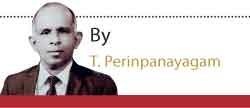 Defensive driving requires one to ‘look-ahead’ both literally and metaphorically; in Cricketing parlance, it’s like a great batsman who sees the ball that much earlier than others less skilled to either score or defend and never be caught off-guard! One of the critical areas in the armoury of ‘Defensive Driving’ is adjusting ones speed according to a plethora of factors and the ability of overtaking with zero-risk to both vehicle being overtaken and the motorist effecting the overtaking manoeuvre smoothly; such skills can be taught and indeed learned – a skill that is a must for any motorist! Motor traffic (Amendment) Act No 8 of 2009 section 155 explains the preventive action a driver should take.
Defensive driving requires one to ‘look-ahead’ both literally and metaphorically; in Cricketing parlance, it’s like a great batsman who sees the ball that much earlier than others less skilled to either score or defend and never be caught off-guard! One of the critical areas in the armoury of ‘Defensive Driving’ is adjusting ones speed according to a plethora of factors and the ability of overtaking with zero-risk to both vehicle being overtaken and the motorist effecting the overtaking manoeuvre smoothly; such skills can be taught and indeed learned – a skill that is a must for any motorist! Motor traffic (Amendment) Act No 8 of 2009 section 155 explains the preventive action a driver should take.
1. Traffic accidents statistics reveal the main causes for serious accidents such as fatal, grievous injuries and severe damages to vehicles and property are due to excessive speeding and incorrect overtaking.
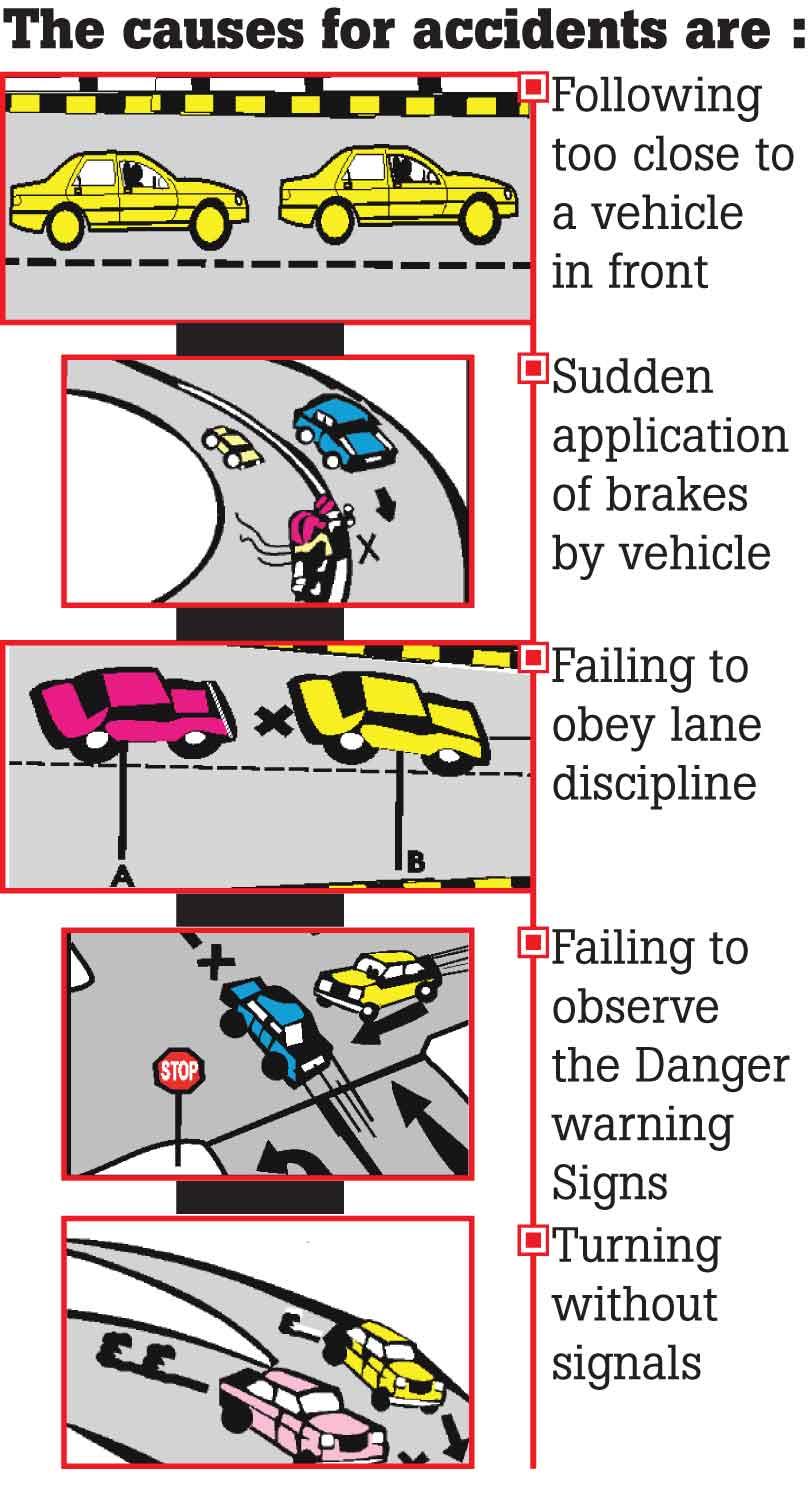
3.The total accidents reported during the past 10 years is shown below: (2006 to 2016) due to excessive speeding & incorrect overtaking
 4.With a view of reducing the accidents, you are advised to follow the rules laid in M. T. Act No. 21 of 1981 section 155 and in the M. T. (Amendment) Act No. 8 of 2009- to sound your horn by day or by flashing the headlamps at night in a dipped position & sound your horn before overtaking.
4.With a view of reducing the accidents, you are advised to follow the rules laid in M. T. Act No. 21 of 1981 section 155 and in the M. T. (Amendment) Act No. 8 of 2009- to sound your horn by day or by flashing the headlamps at night in a dipped position & sound your horn before overtaking.
A (1) The driver of a motor vehicle on a highway shall give sufficient warning of the approach or position of the motor vehicle by sounding an efficient warning instrument whenever such warning is necessary for safety or by flashing the headlamp beams in a dipped position:
Provided, however, that when a motor vehicle is stationary on a highway, no warning instrument affixed to that vehicle shall be operated except for the purpose of preventing an accident or ensuring the safety of the vehicle or its occupants.
(2)No whistle or horn, other than a horn sounding a single note, shall, for the purpose of subsection(1) be sounded on any motor vehicle on any highway within the limits of an urban area.
B. Motor Traffic (Amendment) Act No. 8 of 2009
 2. The driver of a motor vehicle shall not use, or cause or permit to be used the warning instrument of such vehicle except-
2. The driver of a motor vehicle shall not use, or cause or permit to be used the warning instrument of such vehicle except-
(i) when necessary as a traffic warning to avoid an accident; or
(ii) as an indication of his intention to overtake another vehicle, provided however, that at night, such driver may flash the headlights for such purpose and also sound a warning instrument.
3. No person shall use a motor vehicle that has been equipped with a multi-tone horn sounding a succession of different notes, or with any other sound producing device giving harsh, shrill, loud or alarming noise.
4. A multi-tone horn or other sound producing device may be fitted or used:-
(a) on a vehicle used by a fire brigade to an emergency call;
(b) on a vehicle used by members of the police or armed services to an emergency call;
(c) on an ambulance responding to an emergency call.
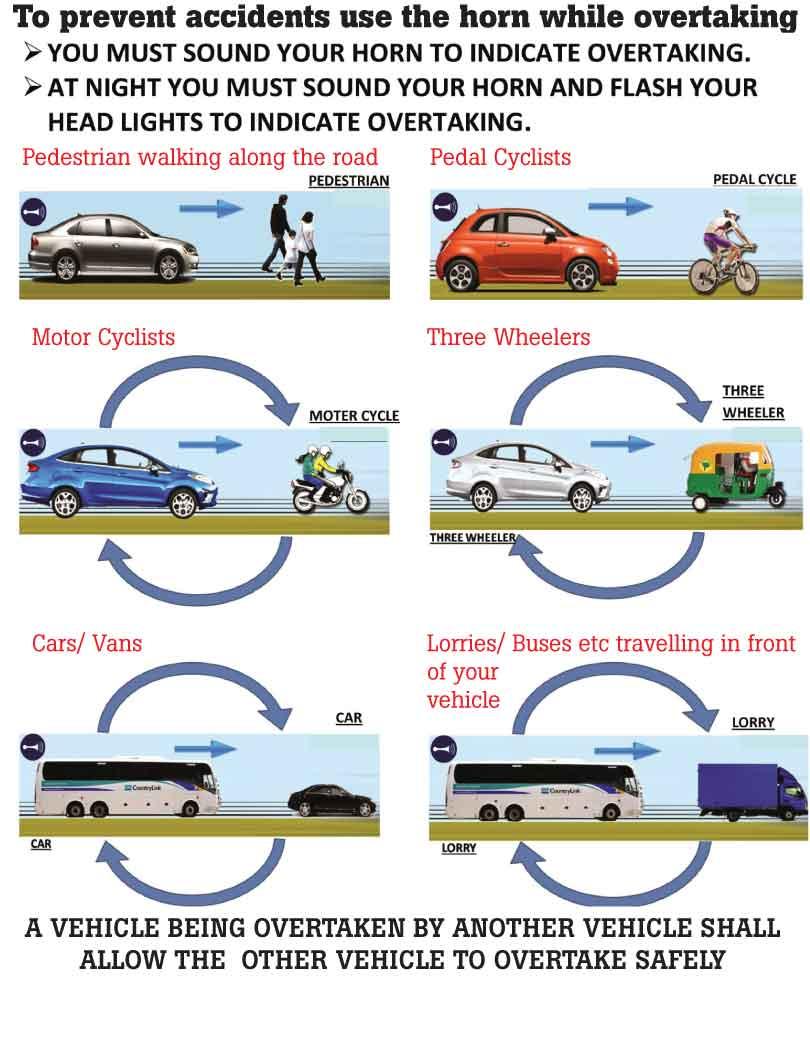
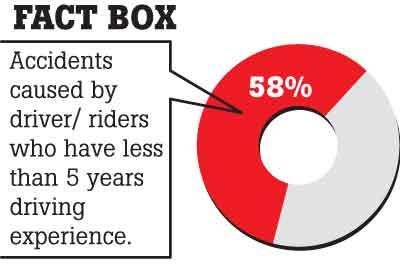 OVERTAKING
OVERTAKINGSee Graphics in the article
1.Always overtake from the right hand side except when vehicle in front of you has signalled that he/she is turning right when circumstances indicate it is safer to overtake from the left side.
2.Overtaking often involves a risk; the best advice is “when in doubt”, do not overtake. Before you overtake, you must know the speed and capabilities of your vehicle, be able to judge the speed of the vehicle you are about to overtake and also that of any oncoming traffic, if you have any doubts, hold back until the road ahead is clear.
3.Do not overtake unless you do so without obstructing other traffic and without causing any danger to yourself or others.
4.Be careful, especially at night and during heavy rain or mist.
5.Do not overtake if in doubt about the safety of your manoeuvre but continue behind the other vehicles.
6.Before you start to overtake, make sure the road ahead is visible and clear and that you can complete overtaking the vehicle in front with the clear roadway before you consult your mirror as to your safety once you have decided to overtake, signal your intention clearly giving turning right signal, toot your horn by day and by night flash your headlight & sound horn and move quickly past the vehicle you are overtaking.
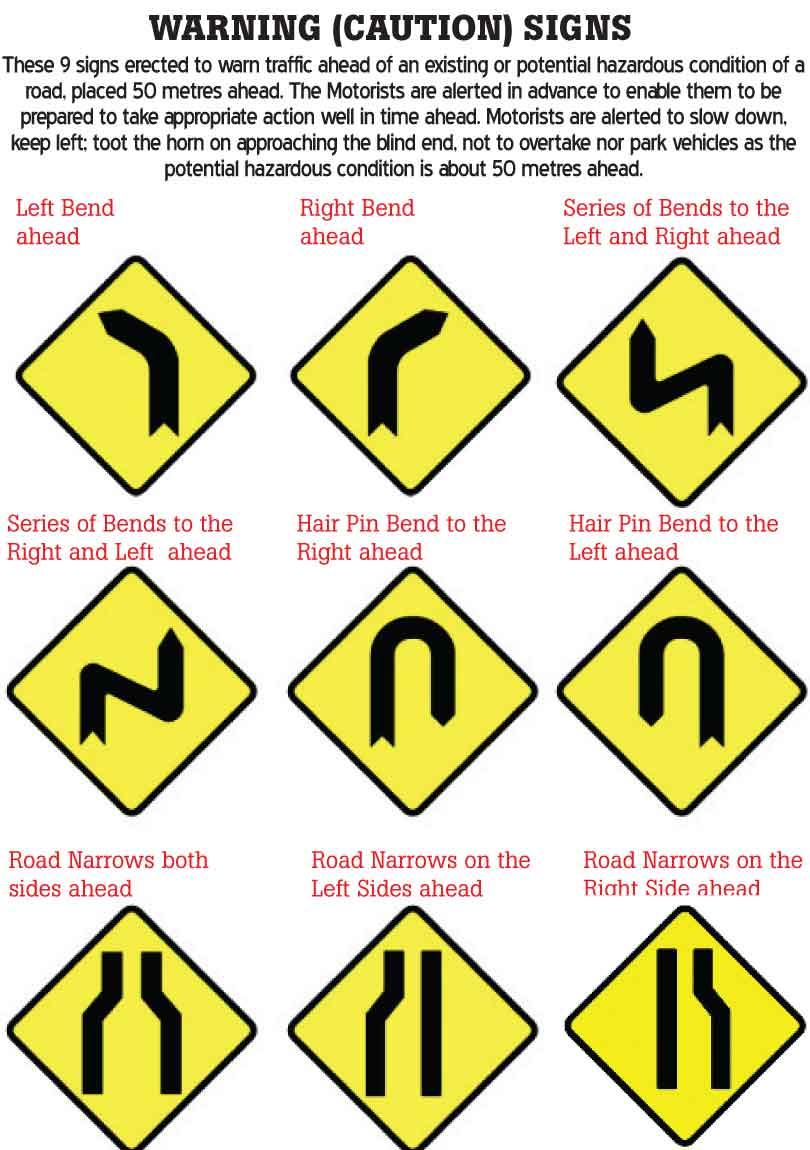
7.After overtaking the vehicle in front, do not cut in sharply in front of the vehicle or cause him/ her to veer from his path but move to the left, using your signal lights after proceeding little distance and move to the left or appropriate lane as soon as it is safe to do so.
8.(A) A motor vehicle being overtaken by another vehicle shall be driven so as to allow such other vehicle to complete the overtaking manoeuvre safely when the intention to overtake is made known.
See Graphics in the article
(B) Do not overtake at or approaching A sharp corner or bend Crest of a hill or humpbacked bridge
At a junction
At a pedestrian crossing
At a “NO overtaking area”
In a town/built up area with a large volume of pedestrian traffic.
Where the road is narrow
Large vehicles, when you cannot see what is ahead of you and the vehicle in front.
Crossing by overtaking a single continuous white line at the centre of the road or a double white continuous line placed at the centre of the road is an OFFENCE.
9. When being overtaken, do not increase your speed, move to the left and let the overtaking vehicle pass quickly.
10.Overtaking is permitted between lanes without causing obstructions to other road users.
11. On a two way road, crossing, overtaking, straddling on the double parallel continuous white lines is prohibited. (100 mm)
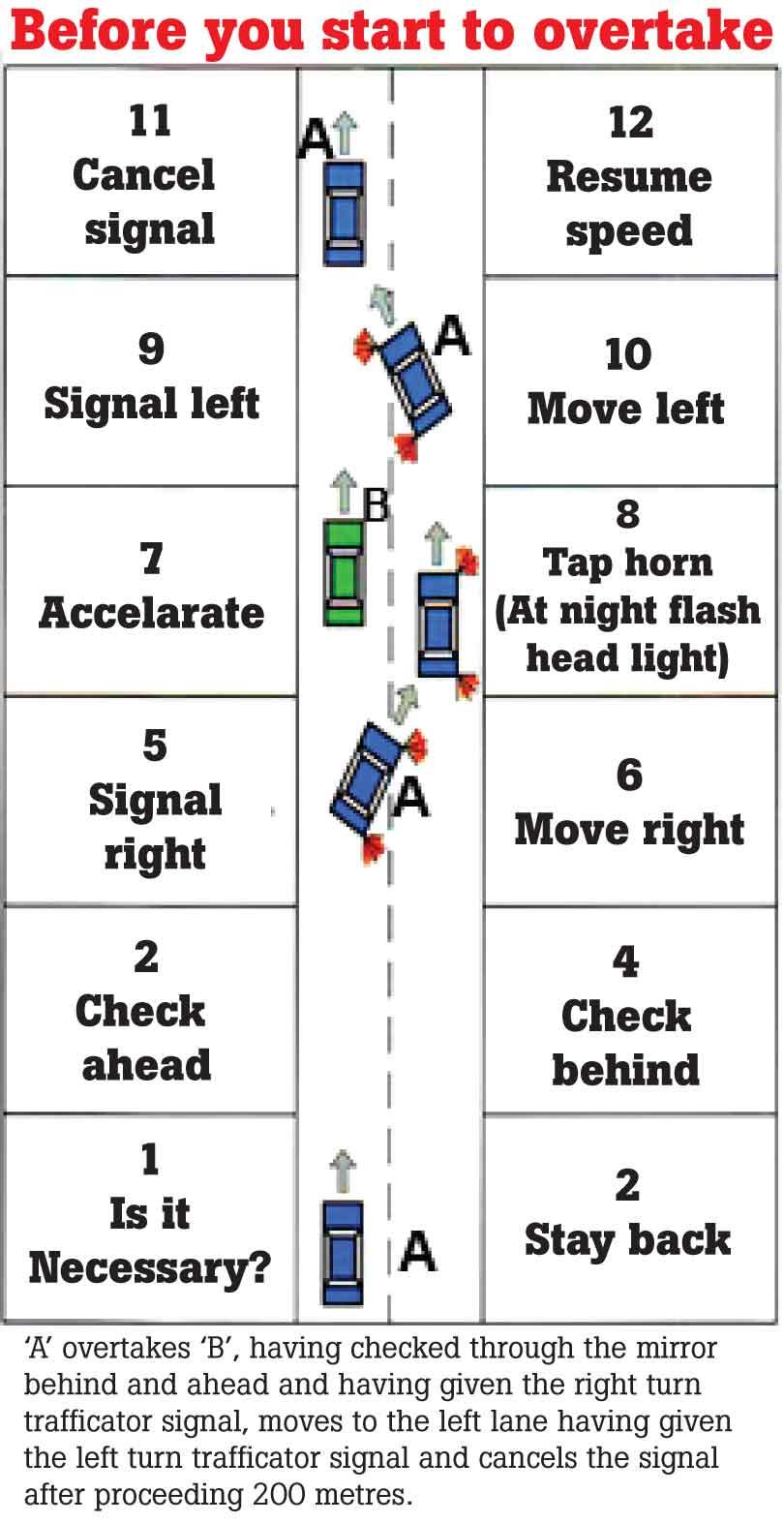
See Graphics in the article
2. (a) Do not overtake at a narrow bridge or a culvert as there is a narrowing of the road towards the bridge or culvert.
(b) Steep hill when descending, keep left, change to lower gear, do not overtake or park your vehicle.
(c) Steep hill climbing upwards - keep left, change to lower gear, do not overtake or park your vehicle.
(d) Road works Ahead- slow down, do not overtake or park your vehicle near the work site.
(e) The two white longitudinal continuous white lines placed at 1.2 metre width at the centre of the road
(represents a centre median) crossing these lines for overtaking is prohibited. Turning right (entering and leaving) with care and safety is NOT an offence.
(f) Do not overtake more than one vehicle at a time.
(g) A motor vehicle shall only overtake one vehicle at a time, except when a manoeuvre of overtaking more than one vehicle can be completed safely and without obstructing the flow of traffic in any direction.
(h) A motor vehicle shall not overtake a column of motor vehicles on a road, whether such column is stationary or moving slowly due to a temporary obstruction to the free movement of motor vehicles on the road, by proceeding on the carriageway of the road intended for the oncoming traffic, unless directed by a police officer.
In a multilane road, a motor vehicle overtaking another vehicle travelling on the same lane may do so by changing lanes, provided that adequate notice is given under section 153 indicating the intention of changing lane, and without causing obstruction to other traffic in any other lane.
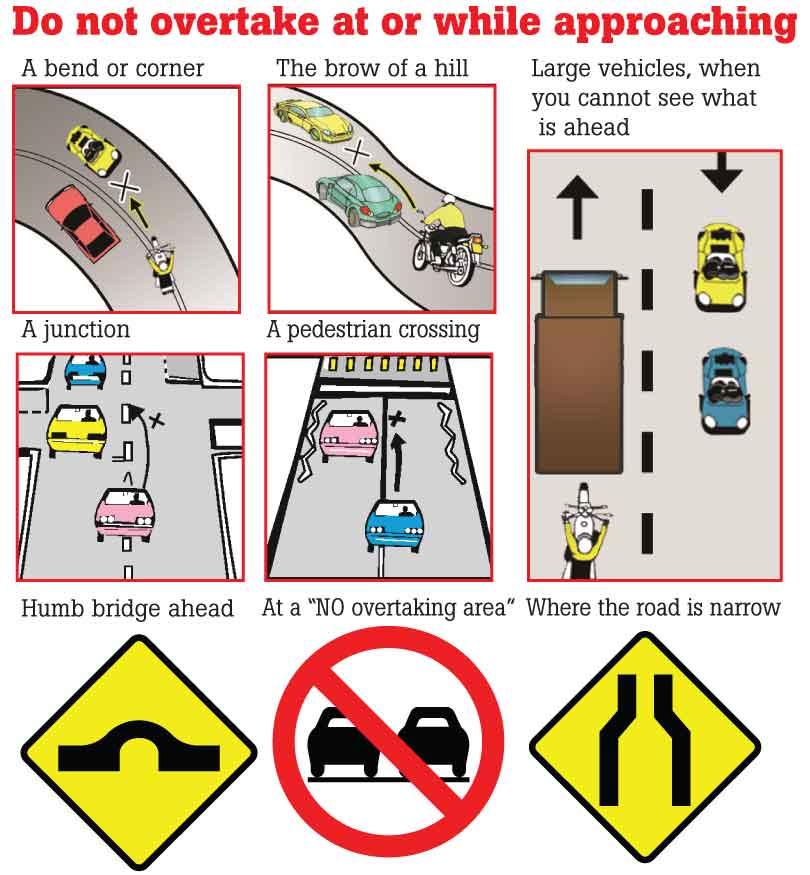
A vehicle in your hands is both a boon OR bane; you could either be a defensive, courteous and responsible driver who would exercise absolute caution especially when overtaking and / or use of horn appropriately. Or if you throw caution to the wind and drive negligently and at excessive speeds; pay scant attention when overtaking or do not use horn by day when overtaking or both horn and flashing of lights when overtaking at night, you would not only endanger yourself and your passengers in your vehicle but other innocent road users as well! Do THINK! Be responsible for your Acts!
Motorists are earnestly urged to read and digest the above invaluable directions for safe driving and retain a copy for your guidance. Please also share a copy of this article with your motoring friends to minimize road traffic accidents in Sri Lanka.
 IMPORTANT NATIONAL ENVIRONMENTAL ACT
IMPORTANT NATIONAL ENVIRONMENTAL ACTStates Drivers cannot use horns that exceed 105 decibels when sounded over a distance of 2 Metres ( about 6 feet) OR that exceed 93 decibels when sounded over 7 Metres ( about 21 feet ).
The writer is a Deputy Inspector General of Police, (Traffic) Rtd.
Managing Director, Institute of Road Traffic Education and Chairman, National Council for Road Safety (1995/1996).
22 Nov 2024 33 minute ago
22 Nov 2024 47 minute ago
22 Nov 2024 2 hours ago
22 Nov 2024 3 hours ago
22 Nov 2024 3 hours ago